What we can learn from the ancient art of wayfinding
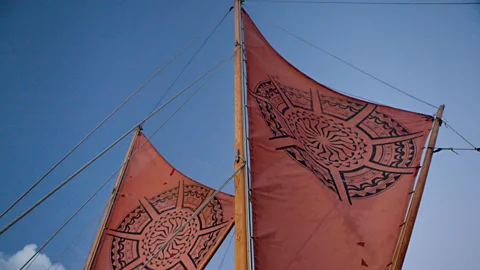 Alamy
AlamyThe way Pacific Islanders used to navigate using only cues found in the environment may seem irrelevant today. But natural navigation still holds surprising lessons.
On 1 May 1976, a large crowd gathered at Honolua Bay on Maui's northwestern shore. There was moored the newly built Hokule'a – a handsome replica of the voyaging canoes from days gone by.
The air was heavy with anticipation. After close to a decade of careful planning, the Polynesian Voyaging Society (PVS) was about to launch Hokule'a on her first long voyage. But there was also a sense of nervous excitement: the crew was to forgo modern navigational instruments and instead rely on the traditional wayfinding techniques of their forefathers to guide them to Tahiti, some 2,400 miles (3,862km) away. Could they pull it off?
Wayfinding – the art of navigating using the wind, stars, ocean swells, and other environmental cues – was how sailors from the Marquesas Islands first discovered Hawaii more than 1,500 years ago. Over time, however, wayfinding all but vanished throughout the Pacific, in large part because colonial powers banned canoe travel or forced compasses and other navigational tools onto their subjects. By the time the Hokule'a was seaworthy, it had been over 600 years since Hawaiians regularly practised wayfinding.
The 1976 voyage, thankfully, had a linchpin in the form of Mau Piailug, a master navigator from the Micronesian island of Satawal, one of the few places where wayfinding remained preserved in the Pacific.
These skills are helping to restore a sense of pride in Pacific Island culture and heritage. But beyond that, wayfinding holds surprising relevance for the rest of us landlubbing urbanites, even if we have no intention of crossing vast oceans in a canoe.
The PVS had persuaded Piailug to lead the Hokule'a to Tahiti and despite never having sailed those waters before, he successfully guided the canoe to its destination in 34 days – a feat that sparked a resurgence in traditional voyaging and wayfinding across the Pacific.
"We're always so grateful to Papa Mau for sharing his knowledge to recover this skill," says Ka'iulani Murphy, a lead navigator at PVS who teaches voyaging at the University of Hawaii at Manoa.
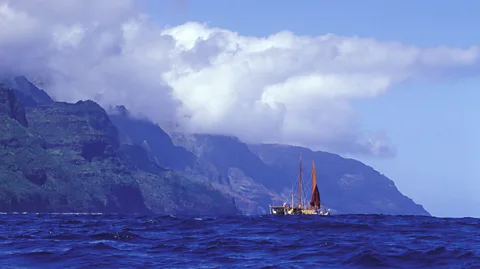 Alamy
AlamyToday, there are numerous organisations throughout the Pacific dedicated to the art of canoe making, open ocean voyaging, and wayfinding. "It's about making sure that the knowledge that we've gained over the years from Mau and all the other voyagers is going to carry on to the next generations," says Junior Coleman, who is in charge of sailing and seamanship at one such society, called 500 Sails, in Saipan.
Cues all around
Wayfinding is how humans have found their way for most of our existence. It's what enabled the Aboriginals, Arab nomads, and Inuits to journey across monotonous yet shifting landscapes of land, desert, and ice. But it was the sailors of the South Sea – those from Micronesia, Melanesia, and Polynesia – whose voyages were most impressive in terms of distance. Despite being spread across a bewilderingly vast ocean three times the size of Europe, Pacific Islanders regularly journeyed in their canoes to fish, trade, and discover new lands.
Traditional navigation is about "using everything that's provided to you in nature", says Coleman, who travelled to Satawal when he was 18 years old to study under Piailug. "We use all the elements and forces in nature – the Sun, stars, moon, waves, currents, clouds, and different animals. All of those."
One of Coleman's favourite cues, for instance, is the North Star. "It's very reliable when you sail north of the equator. As you go towards it, it appears to get higher in the sky so it kind of corresponds with your latitude."
Akin to how a child learns the alphabet before she starts to read, wayfaring novices begin by memorising the positions and paths of stars in the night sky.
"We can use the stars for so many things," explains Murphy, who says astronomy is one of the first things she teaches her students.
But because stars aren't always visible on a cloudy night and during the day, navigators learn to steer in other ways too. Wind direction is an important cue, as are certain species of bird, which allow you to estimate how close you are to land. The brown noddy, a type of tern, has a foraging range of under 40 miles (64km), for instance, while its cousin the white fairy tern can fly three times as far. "They help us hone in on our target because when you see them at sunrise or sunset, they're either flying from an island [to their fishing grounds] or back to it," says Murphy.
Another cue is ocean swells – waves formed by permanent weather systems, such as trade winds, that can travel hundreds of miles. Subtle changes in their refraction patterns can indicate an island and its location. But learning to "read" such swells is one of the hardest skills to master – navigators often speak of lying down on their canoes to feel, rather than see, such waves.
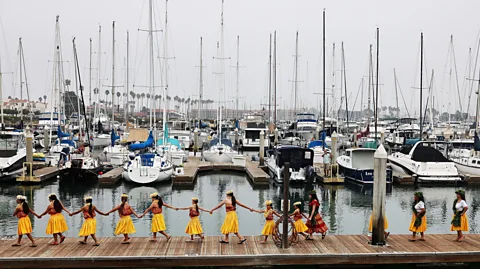 Getty Images
Getty ImagesThen there are other, more mysterious, signs: te lapa or "underwater lighting" that appears to flash or flicker from a distant island; and paguef, seamarks such as seeing a butterfly or certain white whales at particular places. "It's knowledge that has been recorded over hundreds, if not thousands, of years that's a little bit more mystical," says Coleman. "You don't look for them, but when you see them, they kind of confirm where you are."
Waking from a fog
Whatever the cues, the key to successful wayfinding is to sit up and pay attention to your surroundings – something that's become increasingly difficult to do in today's device-saturated world. Many of us have jobs that require us to stare at a screen for multiple hours a day, and subscribe to a "plug in, tune out" culture on our commutes. We've been conditioned to loathe waiting, and whip out our phones the moment we come to a standstill, in a shopping line, or killing time before a dinner companion arrives. Where does that leave room to observe what's happening around us?
"Human beings are in this cell phone-induced fog, they look like zombies walking around," says physicist John Huth at Harvard University. As part of a natural navigation course he teaches each autumn, Huth gets students to guess where west is and to walk in that direction for 20 minutes before estimating the distance they've covered (his tip is that one mile roughly equals 2,000 steps). He also takes them up to the roof of Harvard's science centre to observe stars overhead. "For a lot of students, it's a real epiphany because all of a sudden, you're looking at the world differently," he says.
"The nice thing about wayfinding is that it's right there in front of your face," says Huth, who tries to impart the importance of observing things for yourself rather than placing blind faith in technology.
When it comes to finding our way, smartphones, satellite navigation, and other devices shouldn't be relied upon to replace more traditional skills completely, says explorer Tristan Gooley. While some argue that natural navigation skills aren't needed today, but "that's a little like saying cooking is unnecessary as there's fast food," he says.
"The word it really comes down to is richness," explains Gooley, who runs an online school for natural navigation and who's skills have earned him the nickname the "Sherlock Holmes of Nature". "When you find your way either using plants or the Moon or something like that, you suddenly have this very deep connection of what's going on."
If we're willing to pay attention, nature offers many clues on our whereabouts – rainbows appearing opposite to the Sun in the sky and tree hearts growing closer to the south are just two of countless examples Gooley cites.
Gooley encourages everyone to give natural navigation a go: "I promise you the brain just loves it," he says, explaining that navigation is like a puzzle where you bring together pieces of information to make sense of something wider. "There's almost no other art that I can think of where you can exercise your brain in a fantastically positive way."
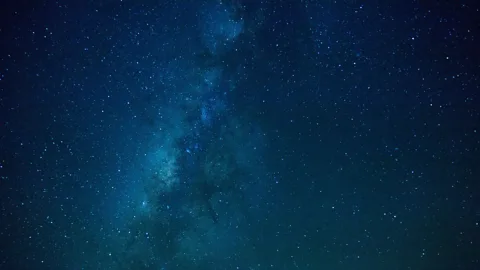 Alamy
AlamyThe mental health benefits that come from being fully immersed in nature, such as when you're sailing, is something that's echoed by many Pacific Island navigators. "It's a peacefulness that you can't really experience in this crazy world we live in," says Coleman. "It's very therapeutic and helps you refocus and return to life with a stronger mindset."
Help your hippocampus
Wayfinding and its associated skills can also boost brain health. "When we're learning an area, trying to put together a new route, or figuring out how far apart things are," we rely primarily on the hippocampus, says Liz Chrastil, an associate professor of neurobiology and behaviour at the University of California, Irvine.
The hippocampus, a pair of seahorse-shaped masses located towards the back of your head, is responsible for orientation, spatial cognition, and memory. In one famous study, researchers discovered that London cab drivers – who have to memorise the city's 25,000 sprawling streets and their associated landmarks to qualify for a licence – have much larger hippocampi compared to non-cab drivers. And in another survey, adults who participated in orienteering, an adventure sport that involves navigating through unfamiliar terrain, reported having better spatial navigation and memory.
"This suggests that adding wayfinding elements into regular workouts could be beneficial over a lifetime," says Jennifer Heisz, an associate professor of brain health and ageing at Canada's McMaster University, who led the study.
It's a noteworthy finding given how our reliance on GPS and other navigational devices means fewer opportunities for active navigation today. The hippocampus is like a muscle, she says, and without regular exercise, it's a case of "use it or lose it". Smaller hippocampus size has been linked with numerous conditions, including schizophrenia, depression, post-traumatic stress disorder, and Alzheimer's disease (although it is important to remember the cause and effect relationship in these conditions is not straight forward).
But relying on GPS may not be all bad. "On one side, we're delegating cognitive abilities to these devices. On the other, they're allowing us to be more adventurous. We know we can go further and have a fallback technique to make sure we get home – even for blind and low-vision people", says neuroscientist and computer scientist Mar Gonzalez-Franco, who helped develop a sound-based navigation system while in her previous job at Microsoft.
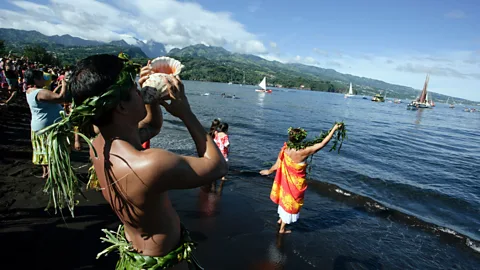 Getty Images
Getty ImagesCraig Stark, Chastril's colleague at UC Irvine, isn't particularly concerned by humanity's recent reliance on GPS – pointing out that we've been doing things differently ever since we invented writing and maps. "The truth is, yes, we're no longer exercising it [the brain] so much in that regard, but we're still feeding it a whole heck of experiences," says Stark.
The key to preserving good hippocampal health, he says, is to keep feeding it novel information so you're constantly learning. When it comes to navigating to a new place, this could mean a number of things. For example, you could try switching off Google Maps' turn-by-turn instructions and using your digital map like a paper one instead, or looking up a route beforehand and memorising it for the journey ahead. If you have more time, you could simply wander in a general direction and soak up the information around you such as where the Sun is overhead to which direction the wind is blowing from.
Living in harmony
Wayfinding, however, is more than just "getting from point A to B", says anthropologist Marianne "Mimi" George who studies voyaging cultures.
Rather, true ancestral voyaging knowledge is much more holistic. It's a systematic means of thinking about different interrelated phenomena, and because of that, it is "deep in climate change information", says George.
People who voyage and those who live on tiny Pacific Islands are on the frontlines of the global warming crisis. "Because you're navigating and relying on natural clues, you're aware of what's happening to our planet's weather systems and the health of our environment," says Murphy.
But the return of traditional voyaging offers a ray of hope. "It's really helped to re-establish a foundation of stewardship towards the environment," says Coleman. "Our ancestors lived with a deep respect for the natural world and were in tune with nature."
For Coleman, the canoe is a symbol of how the world should tackle climate change. "When you go on a voyage, you have a limited amount of resources and they have to be managed wisely," he says. "The crew has to get along with each other, be solution-oriented, and trust that if you have the right people to guide you, we're going to get through it and get to our destination."
Part of the solution lies in "tapping back into our native knowledge about how we care for the environment," agrees Murphy. Which is why, 47 years after her first voyage to Tahiti, the Hokule'a is now on a 47-month circumnavigation of the Pacific that will cover 43,000 nautical miles (79,600 km) and call in at 345 ports. A key aim of the trip, she explains, is to "deepen our values in the voyage" and move beyond exploration, to embracing our mālama (caring) and kuleana (responsibility) towards protecting our planet. Once more, Hokule'a shows us that ancient wisdom still holds lessons for us, even thousands of years on.
--
If you liked this story, sign up for The Essential List newsletter – a handpicked selection of features, videos and can't-miss news delivered to your inbox every Friday.
